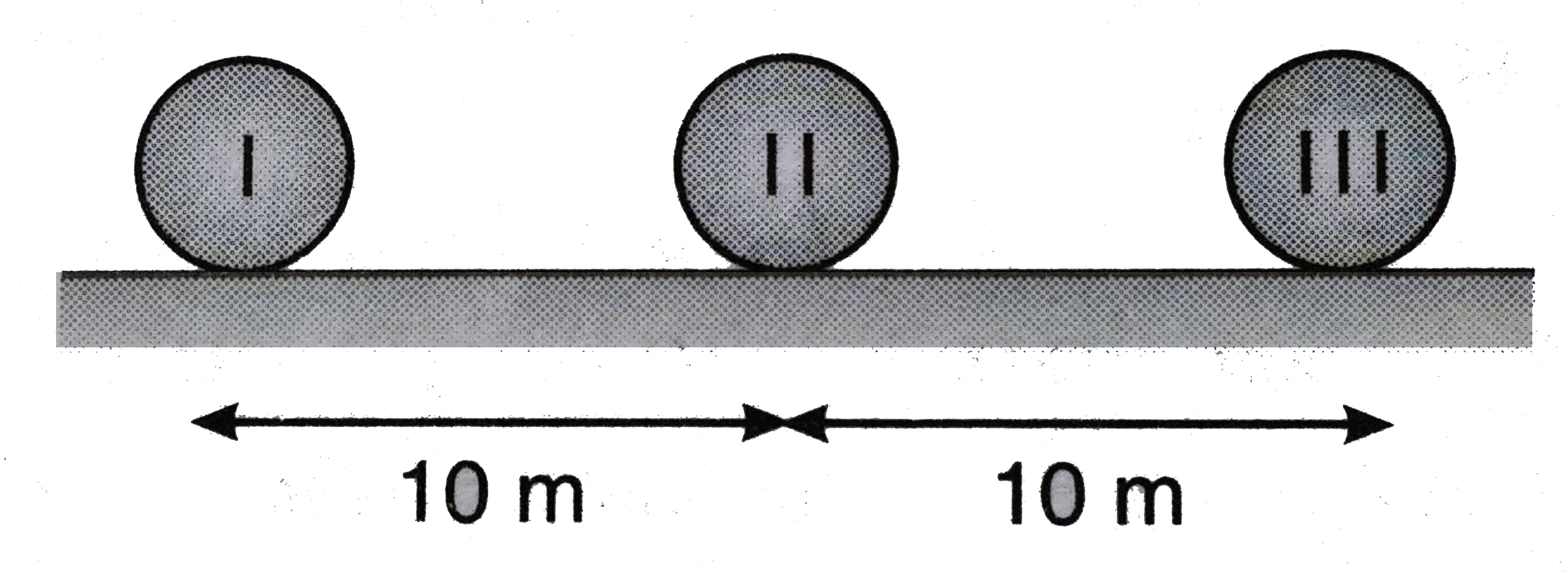In the situation shown, ball A is moving towards ballB. Value of coefficient of restitution e for A and B is 1/2. For balls B and C, e=1. find time gap between two successive collisions of the balls A and B.

2sec
3sec
4sec
5sec
Step by step video & image solution for In the situation shown, ball A is moving towards ballB. Value of coefficient of restitution e for A and B is 1/2. For balls B and C, e=1. find time gap between two successive collisions of the balls A and B. by Physics experts to help you in doubts & scoring excellent marks in Class 12 exams.
Updated on:21/07/2023Topper's Solved these Questions
- TEST PAPERSBOOK - BANSALCHAPTER - TEST PAPERSEXERCISE - PHYSICS PART (A)
32 Videos
- TEST PAPERSBOOK - BANSALCHAPTER - TEST PAPERSEXERCISE - PHYSICS PART (B)
3 Videos
- TEST PAPERSBOOK - BANSALCHAPTER - TEST PAPERSEXERCISE - PHYSICS PART- C
4 Videos
- SEMICONDUCTORSBOOK - BANSALCHAPTER - SEMICONDUCTORSEXERCISE - CBSE Question
32 Videos
Similar Questions
In the figure shown, coefficient of restitution between A and B is e=12, then

View SolutionBall A is about to hit a wall at an angle of incidence of θ=30∘. But before hitting the wall it made a head on collision with another identical ball B. The ball B then collides with the wall. The coefficient of restitution for collision between two balls is e1=0.8 and that between a ball and the wall is e1=0.6. Find the final velocity of ball B. Initial velocity of A was u=5ms−1. Neglect friction.
[tan−1(2.252.34)=44∘]

View Solution
Knowledge Check
Three identical balls, ball I, ball II and ball III are placed on a smooth floor on a straight line at the separation of 10m between balls as shown in figure. Initially balls are stationary. But I is given velocity of 10m/s towards ball II, collision between balls I and II is inelastic with coefficient of restitution 0.5 but collision between balls II and III is perfectly elastic. What is the time interval between two consecutive collisions between ball I and II?
 A4sB5sC1sD10s
A4sB5sC1sD10sA ball A of mass 3m is placed at a distance d from the wall on a smooth horizontal surface Another ball B of mass m moving with velocity u collides with ball A. The coefficient of restitution between the balls and the wall and between the balls is e
(a) the velocity of ball B after collision is u(3e−1)4.
(b) the velocity of ball B after collision is u(2e−1)4.
( c) after collision, ball A will have away by distance d(2e−1)(2e−1) during the time ball B returns back to wall.
(d) after collision, ball A will move away by distance d(e−1)(3e−1) during the time ball B returns back to wall.Aa,dBa,cCb,dDc,dTwo balls of masses 2m and m are moving with speed 2v0 and v0 towards each other. If the coefficient of restitution e=1/3 , the speed of balls , if collision is head - on
Av03,4v03B2v03,5v03C2v03,4v03Dv03,2v03
Ball 1 collides with another identical ball at rest. For what value of coefficient of restitution e, the velocity of second ball becomes two times that of 1 after collision? _____.
View SolutionA ball is thrown horizontally from a height h above a staircase as shown in the figure. If the coefficient of restitution for any collision between the ball and the staircase is e, then the value of h for which the ball will bounce the same height above each step, is

View SolutionA glass ball collides with an identical ball at rest with v0=2 m/sec. If the coefficient of restitution of collision is e = 0.5, find the velocities of the glass balls just after the collision.
View SolutionA ball of mass m moving with velocity v collides head-on which the second ball of mass m at rest. I the coefficient of restitution is e and velocity of first ball after collision is v1 and velocity of second ball after collision is v2 then
View SolutionA ball is dropped from a certain height on a horizontal floor. The coefficient of restitution between the ball and the floor is 12. The displacement time graph of the ball will be.
View Solution
